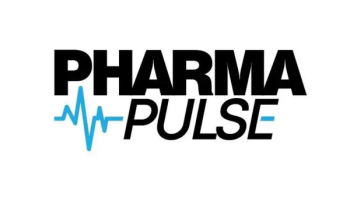
Unlocking Sustainability Across the Supply Chain
In the first part of his video interview with Pharma Commerce Editor Nicholas Saraceno, Nate Chenenko, principal with Ducker Carlisle, explains the meaning behind Scope 3 emissions, including why they pose such a challenge for pharma manufacturers.
In a video interview with Pharma Commerce, Nate Chenenko, principal with Ducker Carlisle, sheds light on the critical issue of Scope 3 emissions and their growing relevance in the pharmaceutical industry, particularly across warehousing, packaging, and outbound transportation.
Chenenko defines Scope 3 emissions as all indirect emissions that occur after a pharmaceutical product is manufactured. While many companies focus on the sustainability of raw material sourcing and production (classified as Scope 1 and 2), Scope 3 encompasses everything that follows: storing products in warehouses, packaging them, transporting them to market, and ultimately, their end-of-life disposal. Although these post-manufacturing steps may not seem like the largest contributors to a company’s carbon footprint, they are significant, and frequently overlooked.
What makes Scope 3 emissions particularly challenging for pharma manufacturers is their indirect nature and the reliance on external logistics and supply chain partners. However, Chenenko emphasizes that these areas closely align with the day-to-day operations of supply chain teams, making Scope 3 an accessible and actionable area for emissions reduction. For instance, optimizing packaging materials, choosing greener transportation methods, and reducing energy consumption in warehouses are all tangible ways companies can drive impact.
Importantly, ignoring Scope 3 emissions not only undermines comprehensive sustainability efforts but also excludes a large portion of stakeholders responsible for distribution and logistics. Chenenko argues that targeting Scope 3 emissions allows for faster, more practical sustainability gains than commonly assumed, and presents a strategic opportunity for pharma companies to align environmental goals with operational priorities.
In conclusion, Chenenko advocates for a more holistic sustainability strategy that fully integrates Scope 3 emissions. By engaging supply chain stakeholders and taking action across the post-manufacturing lifecycle, pharmaceutical companies can make meaningful progress toward their environmental goals while enhancing overall supply chain efficiency.
He also comments on the specific metrics can pharma companies realistically track today to measure distribution-related sustainability performance; how manufacturers can overcome the data gaps from suppliers and third parties when aiming for sustainability certifications or ESG reporting compliance; best practices for reducing greenhouse gas emissions across distribution channels without disrupting supply chain efficiency;how regulatory expectations and customer pressure will shape sustainability efforts in pharma logistics in the future; and much more.
A transcript of his conversation with PC can be found below.
PC: What exactly are Scope 3 emissions, and why do these pose such a challenge for pharma manufacturers, particularly within warehousing, packaging, and outbound transportation?
Chenenko: I will simply define it as everything that happens after the company has produced or manufactured the good, which, in your case, is pharmaceutical products. Many times, when people are thinking about sustainability, they're thinking about, okay, what is going into this product that I'm making. From a raw material perspective, if you're making something out of metal, you have to mine it. If you're making a drug, you have to acquire the chemical compounds, process things, maybe extract them from something else, and then you have to do the manufacturing.
That is absolutely a huge contributor to overall sustainability and the amount of emissions and waste produced, but it omits what the industry calls Scope 3, which is everything after that point. This is a bit of an oversimplification, but you could define Scope 3 as you've made the drug, you've made the product, everything else is Scope 3.
You need to put it in a warehouse, as you mentioned. You need to package the product. You need to transport the product out. Ultimately, it will get used and then disposed of. What we like about focusing on Scope 3 emissions is that it is almost a perfect overlap with what your distribution supply chain people do it on a regular basis. They warehouse things, they package things, they transport things, so although it may not be the biggest contributor of emissions or the biggest sustainability detractor, if you ignore Scope 3, you're missing a big chunk. You're missing a lot of company stakeholders, and oftentimes, the gains in Scope 3 emissions can be fairly easy to access, easier than you might expect.
Newsletter
Stay ahead in the life sciences industry with Pharmaceutical Commerce, the latest news, trends, and strategies in drug distribution, commercialization, and market access.





